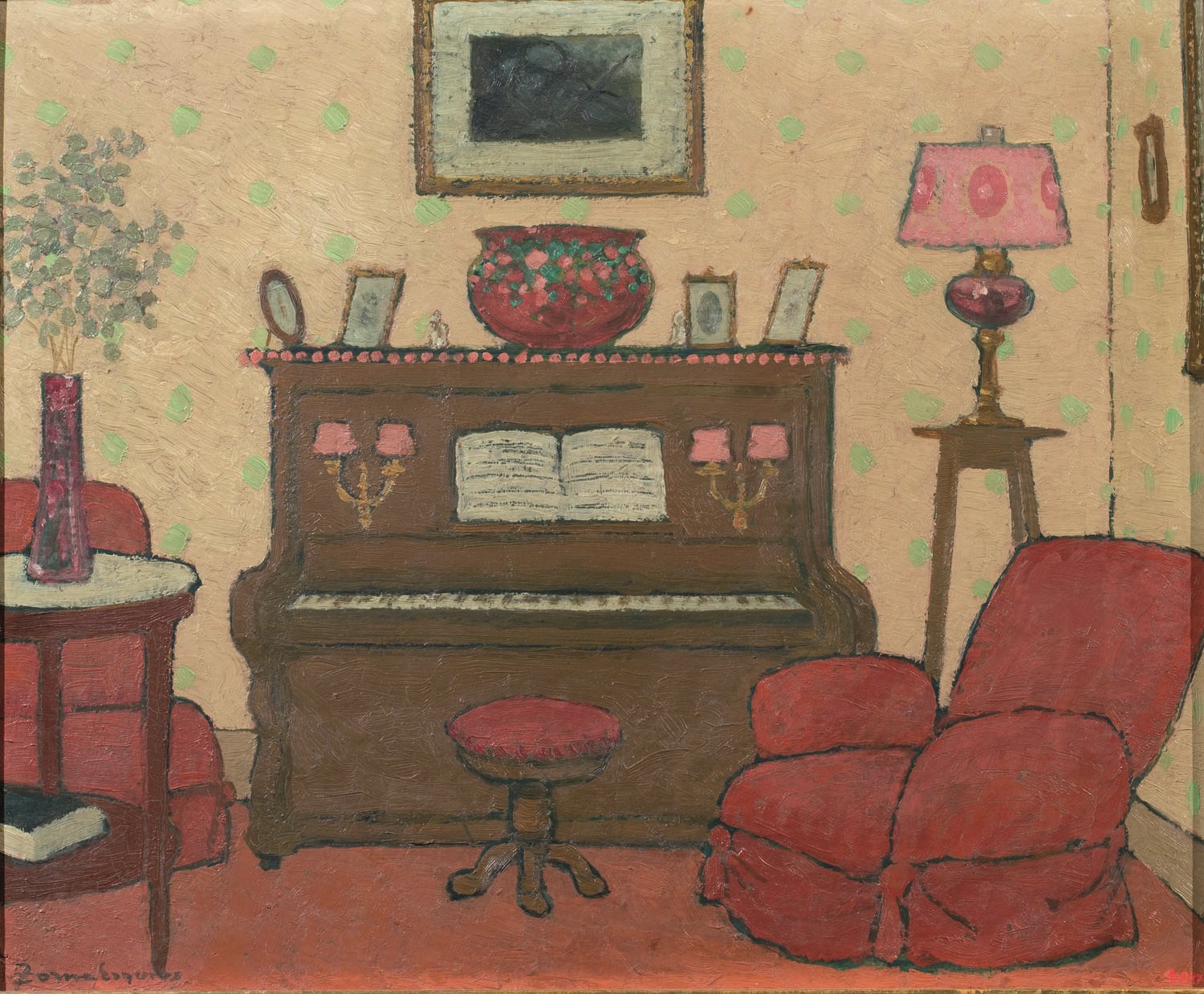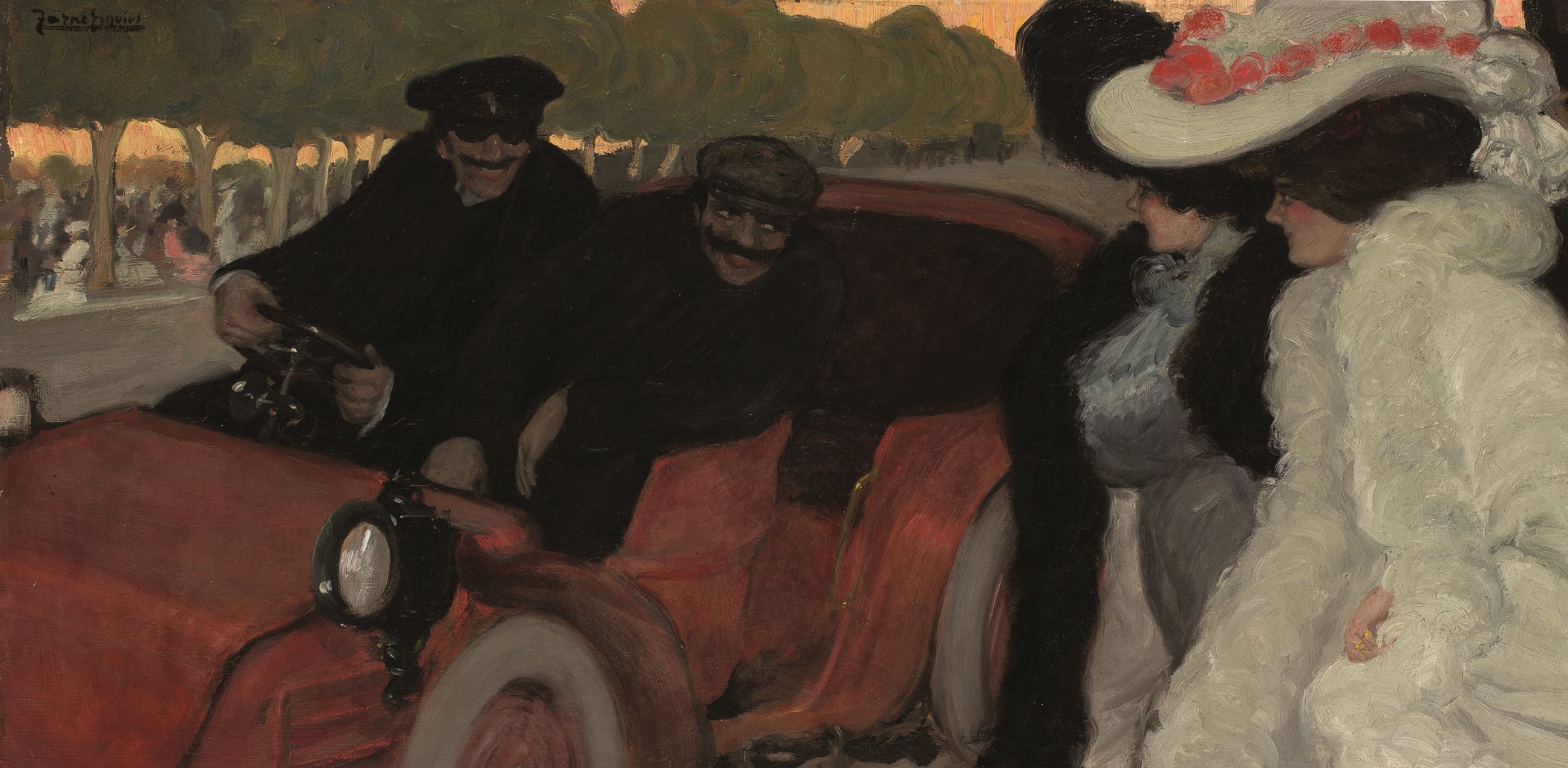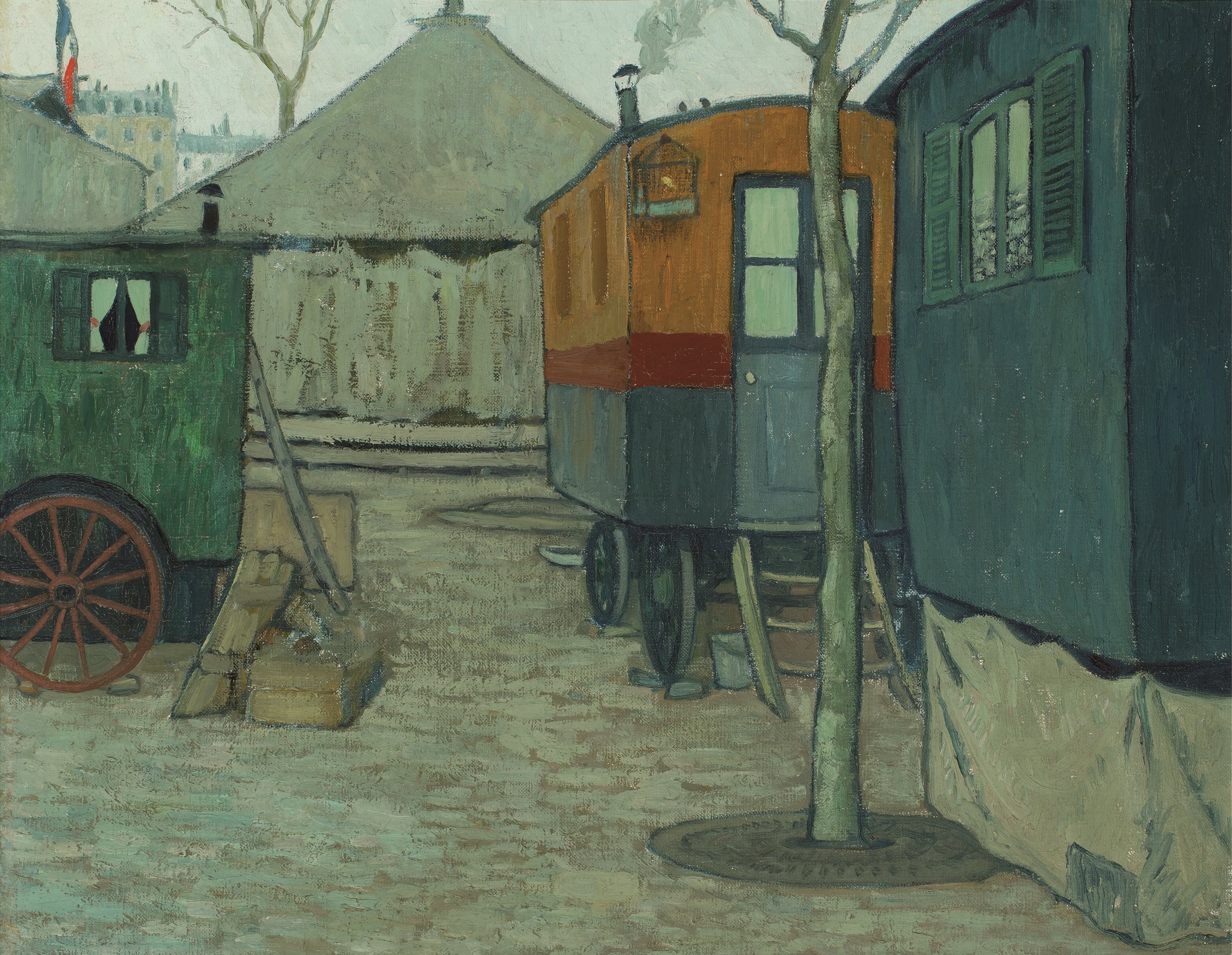Eduard Vallès and Elena Llorens

Pere Torné Esquius, Interior with Piano, c. 1909-1914
A monographic exhibition on Pere Torné Esquius posed a challenge. Although exhibitions had been mounted previously, neither his life nor his work as a whole had ever been studied in great detail. Torné Esquius is by no means an unknown in Catalan art. It could be said that he is one of the classic names, a status conferred basically by the publication in 1910 of Els dolços indrets de Catalunya (Attractive Places in Catalonia), his paintings of interiors, and all his work for children. In fact, from the late 1960s onwards some galleries like the Sala Rovira did help to publicize his work. An exhibition in 1986 in Caja Madrid’s exhibitions hall in Barcelona is the last monographic testimony to date.
The research
Through research work over a long period of time we have been accumulating a considerable number of works by this artist. First we found the ones we already knew about, but above all we visited collectors, the great majority of whom had never loaned out Torné Esquius’ work, hence the large number of unpublished pieces. The help of several art galleries in Barcelona has also been fundamental, both with regard to loans and to the location of owners. In all we have found about 300 works – paintings and drawings – that in many cases we have had to date and entitle for the first time. It has been possible to do this thanks to the catalogues that have been conserved of the exhibitions of Torné’s work. Although he settled in France in 1905, he remained in regular contact with Barcelona, with an exhibition almost every year, hence the notable presence of this artist in private collections.
On the basis of this body of work the catalogue of the monographic exhibition has been created, in which we reproduce many of them. It also includes a documented chronology, the first one about this artist. In this case the task has been more complicated, because we are talking about an artist who died in 1936 and about whom, in biographical terms, we have very little information.
The exhibition, a selection of his paintings, drawings and illustrations
Apart from the publication, the research carried out has resulted in the exhibition. For reasons of space the show only presents some of the works located, in total 85 oil paintings and drawings, plus other documents such as magazines, books and prints. The choice of these works in preference to others has not been made at random. The objective of any exhibition is to display the artist in all his or her complexity, the reason why an attempt has been made to balance the number of works in accordance with the registers that he developed.
Besides being a painter and draughtsman, Torné Esquius also made illustrations for newspapers and magazines, and books for children, and he worked in the world of the graphic arts as a draughtsman. The layout of the exhibition is in keeping with the intended balance between Torné’s different interests: the room has been split into two halves, on the right all his oil paintings of interiors – which made throughout his life – and on the left different spaces focused broadly speaking on Torné the illustrator. In this section we have given special prominence to the discovery of 15 original ink drawings of the 39 plates that make up Dolços indrets, originals which were thought to be lost. So that the public can admire the missing 24 we have opted for a large-format reproduction of them on the wall, where the delightful drawings can be seen in full detail.
Along with the drawings, some of the Catalan and French magazines in which his illustrations were published are exhibited in vitrines. As an illustrator he worked for French publications such as Le Rire or Fantasio, while in Catalonia he did so for La Il·lustració Catalana, Empori, Papitu, or Jordi.
We have devoted one last area to Torné Esquius’ work for children, in which he managed to create a very personal world. We have chosen just a small part of this work, sufficiently representative of the main body of his output. For example the famous music teaching books by Narcisa Freixas, that he illustrated in successive editions; a decorative set for a child’s bedroom, and finally a small selection of some oil paintings and drawings on this theme. The choice was not easy because Torné produced a huge amount of work for children. It is without doubt one of the major areas of his production.
Charles Perrault, Fairy tales, illustrated by Torné Esquius, Barcelona, Ramon Tobella, 1918
The singular contribution of Torné Esquius to the art world
Torné Esquius achieved something very important in an artist, to create a style distinctive enough so that it becomes identifiable. His Modernista beginnings, featuring more worldly work, contrast with the rest of his artistic career, in which he gave priority to his interest in ordinary everyday aspects, carefully observed by a gaze full of lyricism.
His drawings, with a minimal application of colour, are evidence of the artist’s solid training, in contrast to the formal freedom with which he approached his oil paintings of interiors. He starts from a genuine language, dispensing with the constraints of perspective and technique. His interiors with no human figures in them, resolved using a draughtsman’s technique, sum up to perfection the essence of his artistic ideas.
Elena Llorens
and
Art modern i contemporani













